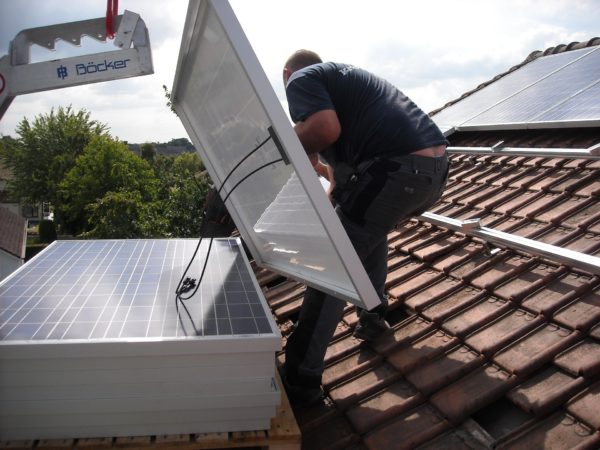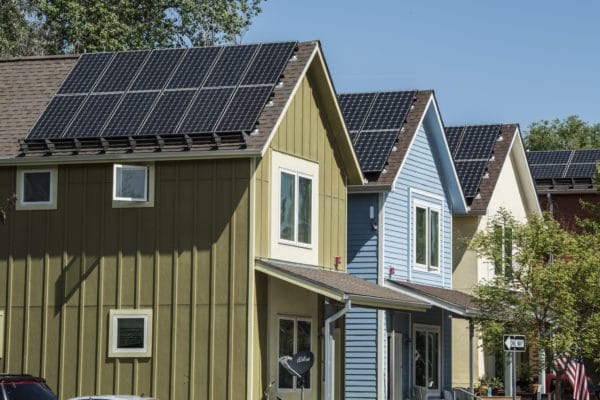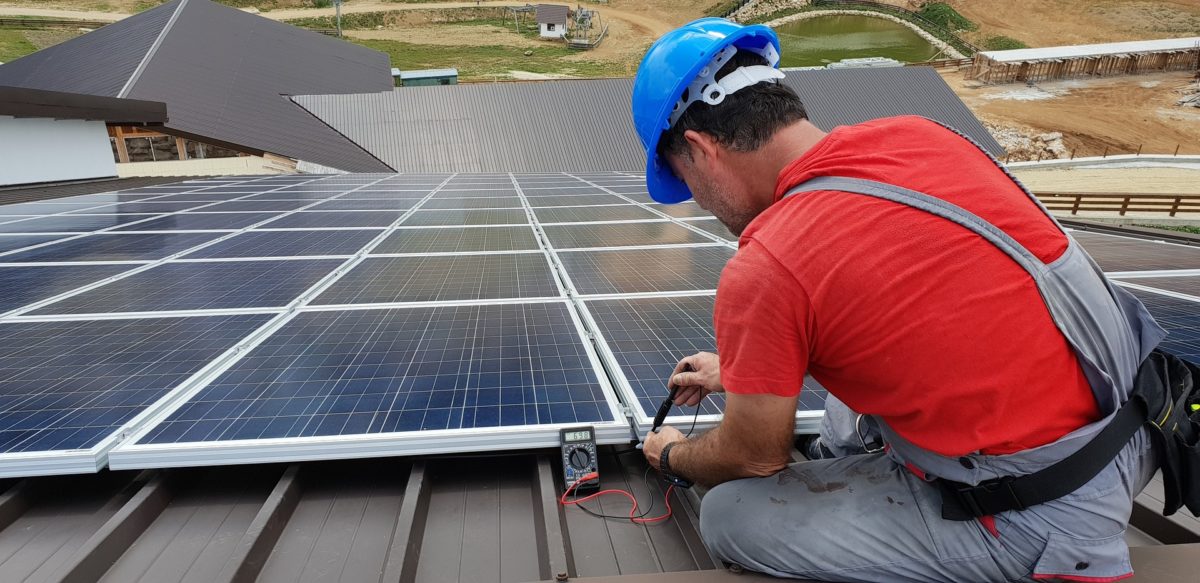Massachusetts is again considering a new-construction rooftop solar mandate, seeking to join California and, if polling is anything to believe, other states as well.
The two states total 46.5 million people, representing almost 15% of the U.S. population, and hundreds of thousands of new structures each year.
Mandates such as these make this a good time to take a hard look at the retrofit rooftop solar industry’s evolving business structure and consider the need for it to drive down installation pricing.
However, business models are evolving, and that’s before we even get to the new-construction mandates.
For example, national solar companies such as Sunrun, Sungevity, Tesla, and others have largely replaced “mom and pop” solar companies that for years knocked on doors and sent out their electricians to install rooftop solar.
So long mom-and-pop?
As with a mom-and-pop, the first touch with a homeowner for these big companies is most often a visit from a salesperson, or a website click by a prospective customer. But unlike a mom-and-pop, the salesperson is probably a contractor or a freelance “1099” employee who doesn’t work for the national company or the local installer. These salespeople complete and sign a pre-approved sales contract from one of the national companies, and move on to the next door.

Image: Pixabay
After that, independent teams of engineers and project managers move the project forward by working with the various local authorities that claim jurisdiction over a project.
Typically, when the mechanical install team arrives at the site, the hardware has already been delivered. The electrical install team shows up later; here, too, this often is a separate company. Finally, long-term operations and maintenance is usually performed by – you guessed it – another company that specializes in O&M.
As you can see, the mom-and-pop team of not-so-very-long ago has evolved into five unique companies for sales, management/engineering, mechanical installation, electrical installation, and post-sales technical support.
Revolution?
In 2018, when California implemented its rooftop mandate, we expressed our opinion about what might happen to the cost of residential solar if it were installed at the time of construction. We said that this monumental move by California was about to revolutionize residential solar all across the country. For one thing, residential solar was in a much better position to leverage economies of scale across a wide variety of soft costs in ways that just weren’t possible before.
Today, we see that small solar at roughly $1 a watt is already happening in other places around the world, so the numbers in the above table — $1.12/watt installed — are within reach.
Solar at the time of new construction can be split into four elements:
- Interconnection, incentives, engineering, procurement – done by a development firm along with required permits.
- Electrical needs between the house’s main panel and the roof – done by an electrician.
- Racking material to hold panels in place – done by the roofing team.
- Installation of solar inverter, and attachment plus wiring of solar panels – done possibly by a unique solar group, but probably as an extension of the electrical team’s work.
This very much looks like what is already happening within national solar company ecosystems.

Dennis Schroeder/NREL
So far, anecdotal data on California’s new-home solar has revealed no price decreases, with homeowners sometimes forced to use a solar contractor that controls the new housing development’s installation rights. This model will not last when Tesla is offering solar at $2/watt.
Hawaii is already allowing solar+storage to be connected to the power grid before it is officially approved, and the state no longer allows net metering. This means less solar paperwork expertise is needed. The National Renewable Energy Laboratory’s SolarApp, which seeks to streamline permitting, also lowers barriers to entry.
…’ain’t goin’ out like that’
Finally, because solar power on a new home is much cheaper, it raises an important question: How will the marketplace and the policy makers work this out? Will retrofit solar installations receive unique incentives not offered for new-home solar construction? Will market forces drive down the price of solar+storage, so much that they approach the price of new-home solar installations?
The retrofit solar expert isn’t going anywhere. They’re going to use new tools to compete, and they’re going to fight at the political level. The U.S. has nearly 140 million homes, and solar installs will top only 3 million of them by the end of the year – meaning we’ve got 98% to go.
As the venerable Cypress Hill might say, “I ain’t goin’ out like that.”
However, as national solar lease companies layer the industry, as fully integrated groups like Tesla aggressively cut prices, and as millions of new homes are built with solar each year, the pace of change can only accelerate.
And the rooftop experts? Well, they had better be ready.
John Fitzgerald Weaver is a solar power professional, known digitally as the ‘Commercial Solar Guy.’ His company has a construction license in Massachusetts, and directly manages projects in MA & RI. He may be reached at commercialsolarguy@gmail.com.
This content is protected by copyright and may not be reused. If you want to cooperate with us and would like to reuse some of our content, please contact: editors@pv-magazine.com.









By submitting this form you agree to pv magazine using your data for the purposes of publishing your comment.
Your personal data will only be disclosed or otherwise transmitted to third parties for the purposes of spam filtering or if this is necessary for technical maintenance of the website. Any other transfer to third parties will not take place unless this is justified on the basis of applicable data protection regulations or if pv magazine is legally obliged to do so.
You may revoke this consent at any time with effect for the future, in which case your personal data will be deleted immediately. Otherwise, your data will be deleted if pv magazine has processed your request or the purpose of data storage is fulfilled.
Further information on data privacy can be found in our Data Protection Policy.